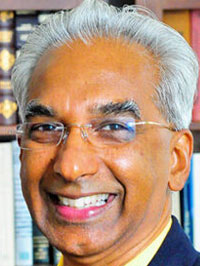Moon

During the Space Age, the United States sent astronauts to the lunar surface six times, exploring a tiny fraction of its equatorial regions. Before and since that time, a handful of robotic explorers have expanded these investigations incrementally. Lunar orbiters have mapped the entirety of the lunar surface in the past few decades … yet this closest of Earth’s neighbors remains just out of reach for habitation and exploitation. But this situation is at a crossroads, with the spacefaring powers of Earth, and many private companies in the U.S. and abroad, poised to reach the Moon within the decade. How will we best explore, prospect, and settle our natural satellite? The Moon session at ISDC will bring together some of our finest thinkers to explore the subject in depth.

Track Chair:
Madhu Thangavelu
Department of Astronautical Engineering, Viterbi School of Engineering & School of Architecture, University of Southern California, National Space Society Board of Directors

Track Chair:
Madhu Thangavelu
Department of Astronautical Engineering, Viterbi School of Engineering & School of Architecture, University of Southern California, National Space Society Board of Directors
Madhu Thangavelu conducts the ASTE527 graduate Space Exploration Architectures Concept Synthesis Studio in the Department of Astronautical Engineering within the Viterbi School of Engineering, and he is also a graduate thesis adviser in the School of Architecture at USC. He holds degrees in both engineering and architecture and has contributed extensively to concepts in space architecture, especially dealing with extraterrestrial development. He is the author or co-author of over 70 technical papers in space architecture, lunar base design and human factors, and co-author of the book The Moon: Resources, Future Development and Settlement (1999) published by John Wiley and Sons and the second edition by Springer/Praxis in 2007. He is the invited author of the chapter “Living on the Moon” in the Encyclopedia of Aerospace Engineering, a major reference work published by John Wiley and Sons in 2010 and the online second edition updated in 2012. He is a member of the USC team that won the NASA NIAC Phase I award in 2011 and Phase II award in 2012. As a former AIAA officer, he served as Vice Chair for Education in the Los Angeles section. He is on the faculty of the International Space University, an international organization that provides training for a promising new generation of leaders and space professionals around the world.
He is a strong advocate for articulating the philosophy of space: Scientists and Engineers(in particular) have a tendency to get lost in the tools and toys they make, though some of us do arrive at philosophy for the meaning of what we do and why, via the long route of experience. By then, alas, for the most part, our life’s work is done. It is a good idea to set us all on a solid foundation in space philosophy, so we can all have a steady handle on our works, as nature reveals her secrets… slowly, ever so slowly, but surely…
